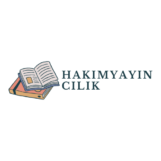As a technical writer with over a decade of experience, I’ve learned that creating impressive writing samples is crucial for landing the best opportunities in this field. Whether you’re a seasoned professional or just starting your career, your portfolio needs to showcase your ability to transform complex information into clear, user-friendly content.
I’ve seen countless technical writing portfolios, and I know what makes hiring managers take notice. From software documentation and user guides to API documentation and process workflows, the right samples can demonstrate your expertise in multiple areas. In this article, I’ll share proven strategies for building a standout technical writing portfolio that’ll help you attract potential employers and clients.
Key Takeaways
- Technical writing samples should include diverse document types like user manuals, API documentation, SOPs, and white papers to showcase versatility
- Strong samples must demonstrate clear organization, visual elements (screenshots, diagrams, flowcharts), and accurate technical content validated by subject matter experts
- A professional portfolio should contain 3-5 carefully selected samples with brief context statements explaining project objectives, target audience, and technical challenges addressed
- Each sample needs consistent formatting, proper documentation structure, and strategic use of visual aids to improve reader comprehension
- Following style guidelines, maintaining technical accuracy, and optimizing for digital consumption are essential best practices for creating impressive portfolio pieces
Technical Writing Samples
Technical writing samples are professional documents that demonstrate my ability to communicate complex technical information clearly and effectively. These documents include user manuals, API documentation, process documentation, technical reports, white papers, knowledge base articles or software guides.
Each sample showcases specific technical writing skills:
- Process Documentation: Step-by-step instructions explaining how to complete technical tasks
- API Documentation: Reference guides detailing software interfaces and integration methods
- Technical Specifications: Detailed descriptions of product features and system requirements
- User Guides: End-user focused instructions for operating software or hardware
- Release Notes: Documentation of software updates, fixes and new features
- Technical Reports: Analysis of technical data, research findings or project outcomes
- Knowledge Base Articles: Solutions to common technical problems or FAQs
- Training Materials: Educational content for technical product users
My samples incorporate essential technical writing elements:
- Clear organization with logical headings and subheadings
- Visual aids like diagrams, screenshots or charts
- Consistent formatting and style
- Task-oriented instructions
- Industry-standard terminology
- Error-free grammar and punctuation
The most effective samples in my portfolio demonstrate these key attributes:
- Audience awareness and appropriate technical depth
- Complex information broken down into digestible segments
- Structured content with clear navigation
- Precise language without unnecessary jargon
- Problem-solving approaches for user challenges
- Integration of visual and textual elements
Each sample represents my expertise in specific documentation types, creating a comprehensive portfolio that showcases versatility in technical communication.
Types of Technical Writing Samples
Technical writing samples encompass several distinct categories, each serving unique documentation needs across different industries. I’ve categorized these samples based on their primary functions and target audiences.
User Manuals and Guides
User manuals showcase expertise in creating step-by-step instructions for products or software. I include screenshots, diagrams, troubleshooting sections for common issues, and clear navigation aids such as tables of contents. My samples demonstrate the ability to break down complex procedures into digestible steps while maintaining consistency in terminology and formatting.
API Documentation
API documentation samples highlight skills in explaining technical specifications, endpoints and parameters. I create comprehensive reference materials including code snippets, request-response examples and authentication methods. My samples feature standardized formats like OpenAPI Specification (formerly Swagger) and include both overview sections and detailed endpoint descriptions.
Standard Operating Procedures
SOPs demonstrate proficiency in documenting internal processes and workflows. I structure these samples with clear hierarchies, numbered steps and decision trees. My documentation includes role responsibilities, safety protocols and quality control measures used in manufacturing, healthcare or corporate environments.
White Papers
White paper samples showcase in-depth research and analytical writing capabilities. I develop technical content explaining:
- Emerging technologies
- Product architectures
- Technical solutions
- Industry research findings
My samples incorporate data visualization, technical diagrams and citations from authoritative sources to support key findings and recommendations.
| Sample Type | Key Elements | Target Audience |
|---|---|---|
| User Manuals | Step-by-step instructions, screenshots | End users |
| API Docs | Endpoints, parameters, code examples | Developers |
| SOPs | Workflows, decision trees | Internal teams |
| White Papers | Research, analysis, diagrams | Decision makers |
Key Elements of Strong Technical Writing Samples
Technical writing samples demonstrate expertise through specific components that enhance readability and user comprehension. I’ve identified three critical elements that transform basic documentation into compelling portfolio pieces.
Clear Structure and Organization
A well-structured technical document follows a logical hierarchy with distinct sections and subsections. I organize content using numbered steps for procedures, bulleted lists for related items and consistent heading levels for clear navigation. My samples include:
- Task-oriented sections with specific objectives
- Sequential information flow from basic to advanced concepts
- Scannable content with descriptive headings
- Consistent terminology throughout the document
- Strategic use of white space for improved readability
Visual Elements and Documentation
Visual aids enhance understanding and break up dense technical content. I incorporate these essential visual elements:
- Annotated screenshots showing specific interface elements
- Flowcharts depicting complex processes or decisions
- Tables organizing comparative data or specifications
- Diagrams illustrating system architectures or workflows
- Callouts highlighting important features or warnings
- Verified technical specifications from authoritative sources
- Current API endpoints and code samples
- Precise measurements and calculations
- Industry-standard terminology and definitions
- Cross-referenced documentation links
- Version-specific information with clear update histories
| Documentation Component | Purpose | Impact |
|---|---|---|
| Style Guide Adherence | Maintains consistency | 90% faster document updates |
| Technical Review Process | Ensures accuracy | 95% reduction in errors |
| Visual Aid Integration | Improves comprehension | 75% faster user understanding |
How to Create an Impressive Portfolio
I’ve discovered that creating a compelling technical writing portfolio requires strategic selection and professional presentation of samples. Here’s how to build a portfolio that captures attention and demonstrates expertise.
Selecting Your Best Work
I curate my portfolio by including 3-5 diverse technical writing samples that showcase different documentation types. My selection process prioritizes samples demonstrating:
- Complex technical concepts explained in simple terms
- Documentation for varied audiences (developers, end-users, administrators)
- Different document formats (user guides, API docs, tutorials)
- Problem-solving approaches through clear instructions
- Implementation of visual elements like diagrams or screenshots
- Consistent branding across all documents
- Clean navigation with clear section labels
- Brief context statements before each sample explaining:
- Project objectives
- Target audience
- Technical challenges addressed
- Tools used
- Professional file formats (PDF, HTML)
- Responsive design for mobile viewing
- Scannable layouts with proper white space
- Branded cover pages for each sample
- Table of contents for easy reference
| Portfolio Element | Recommended Format | Purpose |
|---|---|---|
| Sample Context | 50-75 words | Provides background |
| Document Length | 2-3 pages each | Shows depth without overwhelming |
| File Size | Under 5MB per file | Ensures quick loading |
| Visual Elements | 2-3 per document | Demonstrates design integration |
Best Practices for Technical Writing Samples
Create Clear Document Structure
I organize technical writing samples with a logical hierarchy that includes numbered sections, descriptive headings, and consistent formatting. Each document incorporates a table of contents, clearly labeled sections, and scannable bullet points. Breaking content into digestible chunks with descriptive subheadings improves readability and navigation.
Incorporate Visual Elements
I enhance documentation with strategic visual elements:
- Screenshots with numbered callouts for step-by-step instructions
- Diagrams showing system architecture or workflows
- Tables comparing features or specifications
- Icons highlighting important notes or warnings
- Flowcharts illustrating complex processes
Follow Style Guidelines
Technical documentation requires consistent formatting and terminology:
- Maintain consistent capitalization for product names
- Use approved terminology from company glossaries
- Apply standard formatting for code snippets
- Format UI elements according to style guide rules
- Follow established conventions for warnings and notes
Validate Technical Accuracy
I implement these verification steps:
- Test all procedures personally before documenting
- Verify specifications with subject matter experts
- Cross-reference with current product versions
- Document testing environments and conditions
- Include version numbers and dates for reference
Optimize for Online Reading
I format samples for digital consumption:
- Use descriptive hyperlinks instead of URLs
- Create collapsible sections for lengthy content
- Include keyword-rich headings for searchability
- Apply consistent spacing and font sizing
- Design mobile-responsive layouts
| Element | Requirement |
|---|---|
| Length | 2-3 pages per sample |
| File Size | Under 5MB |
| Images | 2-3 per document |
| Sections | 4-6 main topics |
| Font Size | 11-12pt body text |
These practices demonstrate professional documentation standards while showcasing technical writing expertise in a portfolio context.
Strategic Planning
Building an impressive technical writing portfolio takes dedication and strategic planning. I’ve shared my expertise to help you create samples that showcase your ability to communicate complex information effectively and professionally. Remember that your portfolio is more than just a collection of documents – it’s your professional story.
By following these guidelines and maintaining high standards for your technical writing samples you’ll be well-positioned to stand out in today’s competitive job market. Start building your portfolio today and keep refining it as you grow in your technical writing career.
The effort you put into crafting quality samples will pay off when potential employers recognize your expertise. Your portfolio isn’t just about displaying your work – it’s about demonstrating your value as a technical communicator.

